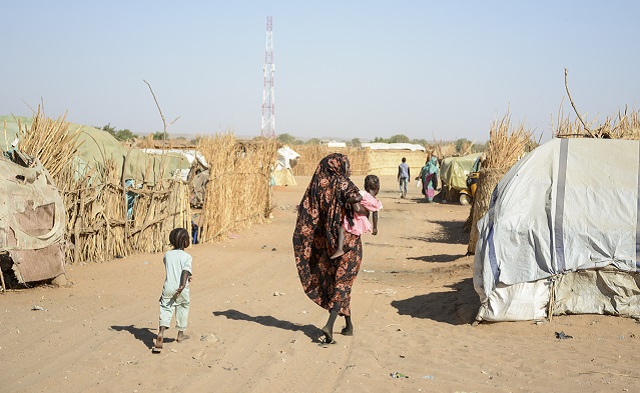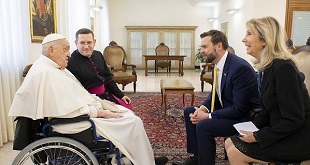
ANALYSIS | RONALD MUSOKE | Up until January, this year, Widat Muhammed Ali, 37, was a practicing lawyer in Sudan. She lived happily with her husband of 11 years, who is also a lawyer, together with their children who were studying at an international school.
Then fighting erupted between two rival factions of the Sudanese military government. It pitted the Sudanese Armed Forces (SAF) led by Abdel Fattah al-Burhan, and the paramilitary Rapid Support Forces (RSF) led by Mohamed Hamdan Dagalo aka Hemedti.
Widat had no choice but to flee to Uganda to secure safety for her family and education for her children. She is among the 15,000 Sudanese refugees who have fled southwards to Uganda since the beginning of this year according to the latest report from the International Rescue Committee, an American humanitarian agency.
Humanitarian aid agencies say the influx of Sudanese refugees in Uganda is expected to grow as the conflict rages on. According to the UN refugee agency, UNHCR, nearly 40% of all refugees who have arrived in Uganda over the last 14 weeks are from Sudan.
Uganda is already one of the largest refugee hosting countries in the world, and the rise in Sudanese refugees arrivals is straining the country’s resettlement infrastructure. A case in point is the Kiryandongo refugee settlement in mid-western Uganda.
Its reception centre has capacity to process just 520 refugees but this is well below the more than 8,000 new arrivals who checked-in at the centre since January 2024. The new arrivals now have to spend twice as long at the reception centre before being relocated to other spaces in the settlement.
Like Widat, nearly 90% of Sudanese refugees are women and children. The new arrivals often come with nothing, meaning they are not able to support themselves. It also means that these people are unable to make safe and suitable shelter for themselves, even with humanitarian assistance.
“I have nothing. They gave me food, and non-food items like blankets and sheets to construct some shelter to stay here,” said Widat, “but I don’t have enough to construct anything.” “The place is grass, so it is not easy to stay. I just want a safe space for me and my children.”
Food insecurity among refugees is also widespread, as are health concerns like respiratory tract infections, malaria, and a range of non-communicable diseases. In fact, Widat’s son has been sick while at the camp.
“My eldest son, now he feels dizziness and fever,” says Widat, “When they brought him [to the medical centre] they gave him some medicine but there is no improvement, maybe because of insufficient food.”
Kiryandongo refugee camp also has one of the highest prevalence of malnutrition in the country, with a Global Acute Malnutrition rate of 9.1%, right below the emergency threshold set by the World Health Organization (WHO).
As Uganda strains to meet the needs of Sudanese refugees, the newly arrived refugees are experiencing the unbearable stress of trying to survive without even the most basic necessities and without family and friends from home.
Widat has not heard from her husband since August 2023. Without internet access, she has been unable to know the fate of her family, including her husband. “Although there is a war there, I will return to Sudan. It is better for me [to die there] than to suffer like this.”
Widat’s plight represents thousands of other Sudanese refugees who have fled Sudan over the last year following an escalation in fighting between the rival factions of Sudan’s military. Humanitarian agencies say the conflict in Sudan has had catastrophic impacts on almost every aspect of day-to-day life in the country.
For instance, the ongoing fighting has resulted in significant loss of life, with over 14,700 people killed and almost 30,000 injured while more than 8.2 million people have fled their homes since the conflict started on April 15, 2023, making the battle in Sudan the world’s largest displacement crisis.
Already, 6.5 million people have been internally displaced since April 2023 according to the UN International Organisation for Migration (IOM). This is in addition to the 3.8 million who were already displaced prior to the start of the war, turning Sudan into the largest internal displacement crisis. The war now risks creating the world’s largest hunger crisis according to the World Food Programme.
Since, 15 April, last year, 1.76 million people have crossed Sudan’s borders going mainly to Chad, South Sudan, Egypt, Ethiopia, Uganda and Central African Republic according to the United Nations High Commissioner for Refugees (UNHCR). The UNHCR says about US$ 2.7bn is needed for this year’s Sudan humanitarian response plan but, less than 6% has been funded so far.
With almost two million people already displaced into neighbouring countries like Chad, Uganda and South Sudan which were already struggling with meeting humanitarian needs themselves, it is critical that the low-income fragile countries who have opened their doors to refugees are better supported by the international community, especially by fully funding their humanitarian and refugee response plans.
Today, close to 25 million people (around half of the population) are in immediate need of assistance, including 18 million people facing acute food insecurity according to a report published on April 12 by the International Rescue Committee (IRC).
“We stand at a critical juncture in Sudan’s history, where the choices we make today will shape the future of generations to come. The past year has been marked by immense challenges and hardships for the people of Sudan,” says Eatizaz Yousif, the IRC Country Director for Sudan.
“The conflict has resulted in significant loss of life, displacement, and economic strain. Beyond the figures, our new report aims to show the very real, multifaceted, human impact of the crisis on the people that have become displaced due to an entire year of this conflict.”
While the European Union is readying an US$9 billion aid package for Egypt amid fears that the conflicts in Gaza and Sudan will raise immigration pressure on Europe, the UN’s US$2.7 billion humanitarian appeal for Sudan is only 6% funded.
“As the fighting continues in Sudan, humanitarian agencies like IRC are facing impediments that prevent us from reaching and providing aid to those in need,” Yousif says, “The IRC’s efforts to provide water, health care, and protection services to those who have fled the conflict are vital and must continue.”
“Ultimately, this crisis will not abate until the fighting comes to a stop, which requires a re-invigoration of diplomatic efforts to bring parties to the table to agree to a cessation of hostilities and bring forward a long-term resolution to the conflict.”
In the meantime, humanitarian agencies say, it is critical that both parties respect their commitments to protect civilians and remove all obstacles to the delivery of humanitarian assistance, and morally incumbent that donors urgently increase the funding needed to support an expansion of operations.
“One year since the start of the war in Sudan, the civilians here are enduring starvation, mass sexual violence, large-scale ethnic killing, and executions. Millions more are displaced, and yet the world continues to look the other way,” said Will Carter, the Norwegian Refugee Council’s country director for Sudan in a statement sent to The Independent.
“Today marks a milestone of shame for the warring parties in Sudan, as much as for the international community that has allowed this catastrophe to worsen.”
Carter says the looming famine should have forced warring parties to allow aid to flow, but the reality on the ground is that aid remains obstructed and global powers remain indifferent.
“One year on, we now have the world’s worst displacement risking becoming the world’s largest hunger crisis on our watch, with paltry levels of funding for the humanitarian response.”
“We need world leaders to step in and provide essential funding to save the lives of millions from imminent famine and ongoing bombardment. We need all the diplomatic influence possible on the warring parties to avert further catastrophe and protect civilians.”
 The Independent Uganda: You get the Truth we Pay the Price
The Independent Uganda: You get the Truth we Pay the Price



